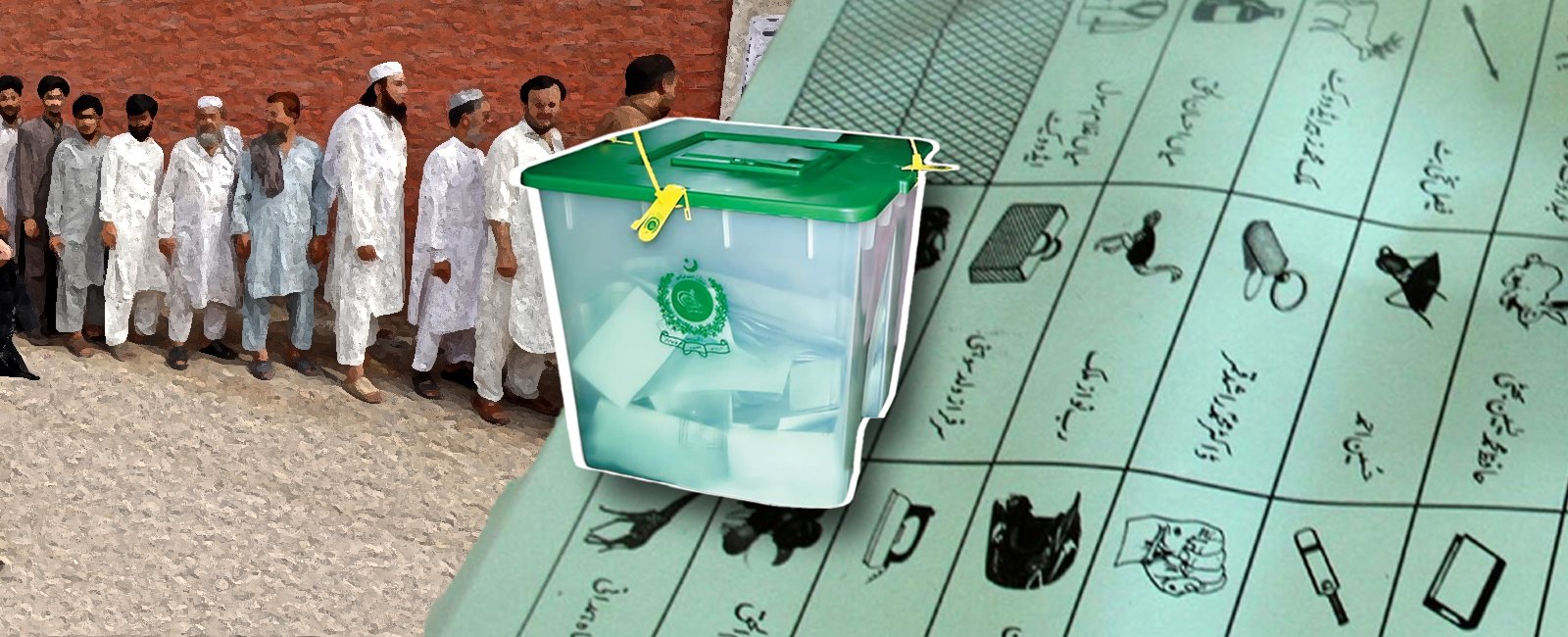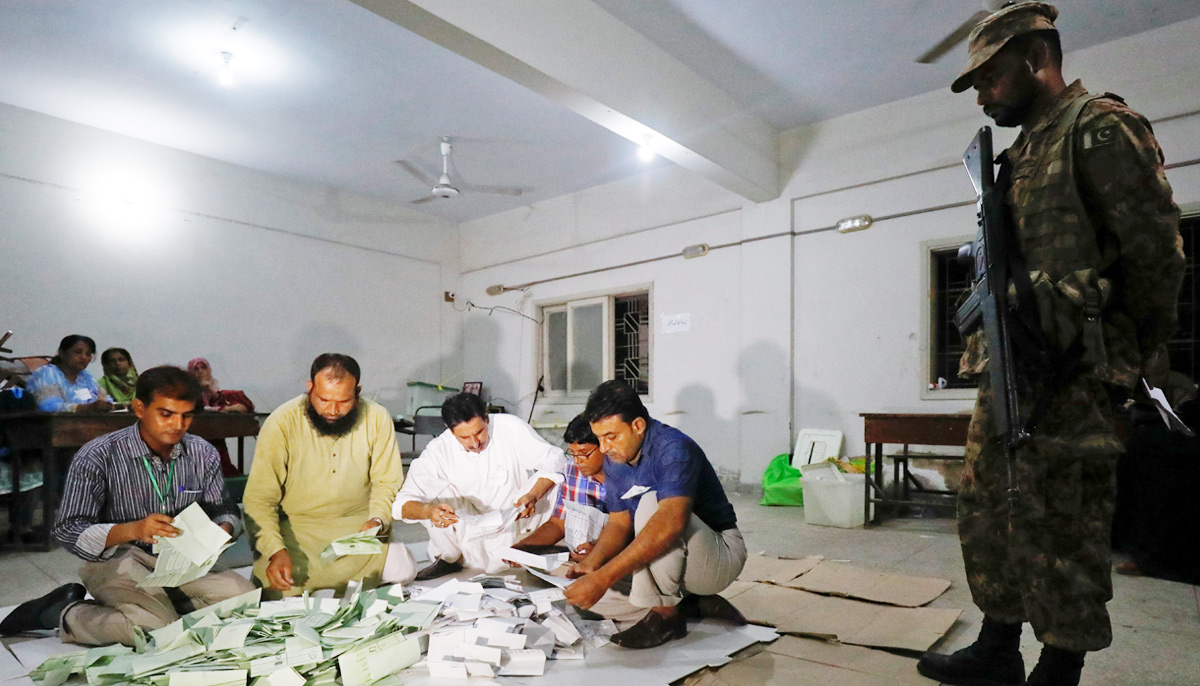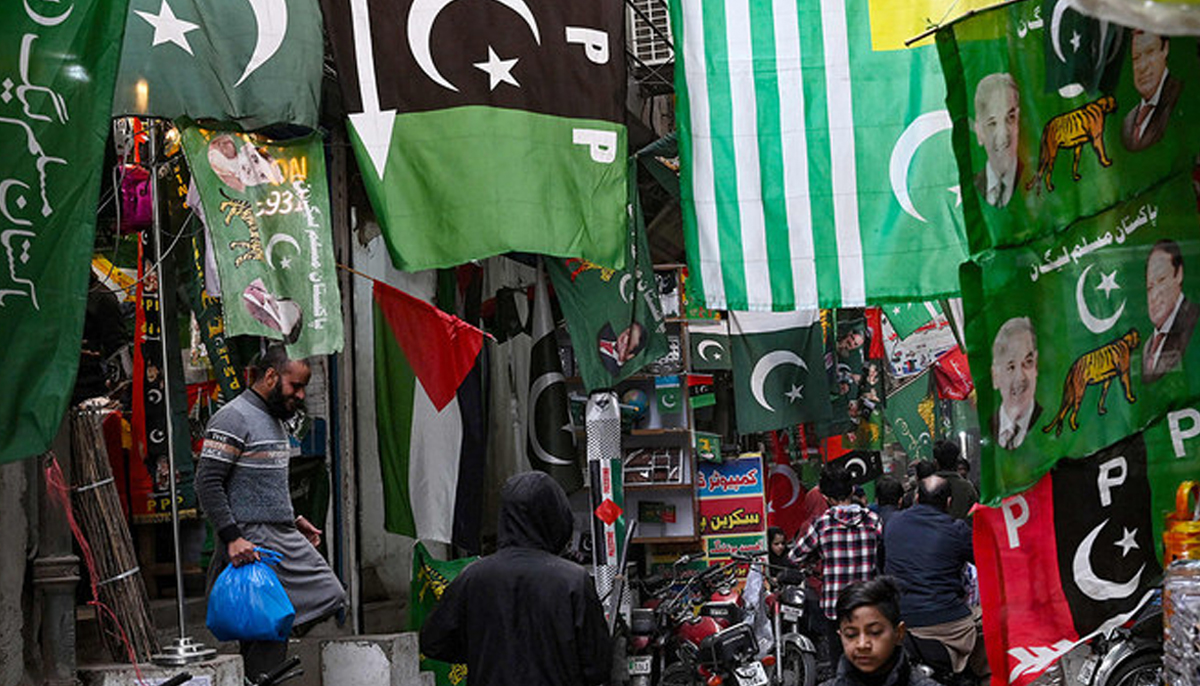The science behind elections in Pakistan — post-poll

The Election Commission of Pakistan has designated the polling time from 8am to 5pm. Once it is past 5pm, only individuals who are already inside the polling station will be permitted to cast their vote. After the voting period ends, the votes are counted at each polling station by Presiding Officers (POs) in the presence of polling agents.
Understand the entire election cycle
Rejection of vote
Using the stamp provided, mark the space containing the name and symbol of your preferred candidate. Once done, fold and insert it in the ballot box. Make sure to fold your ballot paper lengthwise, so that the ink doesn't spread on other candidates' space on the ballot paper, otherwise, your vote can be rejected at the time of counting.
Results
POs after counting hand over the results to Returning officers (ROs). The RO shall compile the results of its designated constituencies till 2am.

But if due to any circumstances RO is unable to compile the provisional results, he shall report it in writing to the election commission and then he is bound to complete the results by 10:00 am.
RO, after compiling the complete result will send it to the Election Commission of Pakistan.
Election Management System (EMS)
The commission has developed a result compilation mechanism called "Election Management System (EMS)" to avoid a repeat of 2018.
Under this system, it will be possible for the PO to send the results immediately to the RO through a mobile app, which will be installed on their mobile phones.
The PO will upload a picture of Form 45 on the app, which will be checked by RO and a data entry operator will compile data afterwards.
Announcement of provisional results
After receiving the vote count from all the POs in a constituency, the RO will immediately create and declare a preliminary summary of the results (excluding postal ballots). This will be done in the presence of any candidates, their agents or authorised observers who are present. The provisional summary, signed by the RO, will be displayed in a prominent location in their office and a copy will be sent to the commission.
Consolidation of results
After provisional election results are announced, the RO must provide written notice to the candidates and their agents regarding the date, time, and location of the result consolidation. The consolidation will be conducted including the results of the count provided by the POs. Contesting candidates and their agents may be present during this process.
After that, the RO gives a copy of the "Consolidated Statement of the Results of the Count" to the contesting candidates and their election agents and sends the "Final Consolidated Result" to the commission against proper receipt.
It is the commission's responsibility to publish the aforementioned documents on its website within 14 days after the polling.
Resealing of packets and supply of copies
ROs then seal the opened packets and statements used for consolidation. Candidates and their agents may sign and seal the packets. The attested copies of the "Consolidated Statement of Results" are also provided to candidates and agents present on the occasion.
What if there’s a tie?
In case of a tie in the election results, the RO will declare both candidates as winners and they each will represent the constituency for half of the term.
The RO will draw a lot in the presence of both candidates and their election agents to decide which candidate will serve as a member of the assembly for the first half of its term. The name of the candidate chosen will be published in the official Gazette by the Commission.

In case of death or any other reason that prevents one of the elected candidates from assuming office or the seat becomes vacant, the other remaining elected candidate will serve as a member for the entire duration.
If there is a tie in the number of votes between more than two candidates, the Commission will schedule a new election for the constituency within sixty days of the consolidation of results.
Results declaration
The commission will announce the winner of the election within 14 days of the poll by publishing the names and votes of all candidates in the official Gazette.
Documents to be retained by the ECP
The RO must follow a prescribed procedure to label and seal bags containing election materials. The label must include a description of the contents, the election date, and the constituency name and number. The officer must also provide a certificate to the commission confirming compliance with the sealing process for all polling stations in the constituency.
The commission must allow public inspection of all documents retained under section 99, except for ballot papers, subject to prescribed conditions. Upon application and payment of a prescribed fee, the Commission may provide copies or extracts of those documents.
By-elections
If a member's seat becomes vacant, the commission will notify the constituency to elect a replacement.
Election on reserved seats
For the election of reserved seats in an assembly for women and non-Muslims, political parties must submit separate lists of candidates in order of priority to the Election Commission within a specified time frame.
These lists cannot be altered once the nomination paper submission deadline has passed. Parties can include additional names in their lists to account for disqualifications or fill vacant seats during the assembly's term.
Candidates for these reserved seats must file nomination papers, and if a vacancy occurs, it is filled by the next person on the party's list. Before being named as the replacement, the individual must swear an oath of no disqualification.
Candidates must also submit various documents to the RO. In cases of equal representation, lots are drawn to determine the winning candidate.
Campaigns expenses
The election expenses of a candidate include expenses incurred by any person or political party on behalf of the candidate or specifically for the candidate by a political party.
If someone incurs election expenses on behalf of a candidate, such as for stationery, postage, advertisement, or transport, those expenses are considered to be the candidate's election expenses.
The expenses for election to a seat in the National Assembly are Rs4 million, while for a seat in a provincial assembly, it is Rs2 million. Candidates must provide proof of payment for all election expenses, except for amounts less than one thousand rupees.

If there is a dispute over a candidate's election expenses, the commission may conduct an inquiry to determine if the expenses incurred by someone other than the candidate were done with the candidate's permission.
If the expenses were incurred without the candidate's permission, they would not be considered election expenses on behalf of the candidate.
Return of election expenses
A candidate who is competing in the election, but did not win, must submit their election expenses within 30 days after the name of the winning candidate is published. Both the winning candidate and the competing candidate must submit their election expenses to the RO using Form C.


